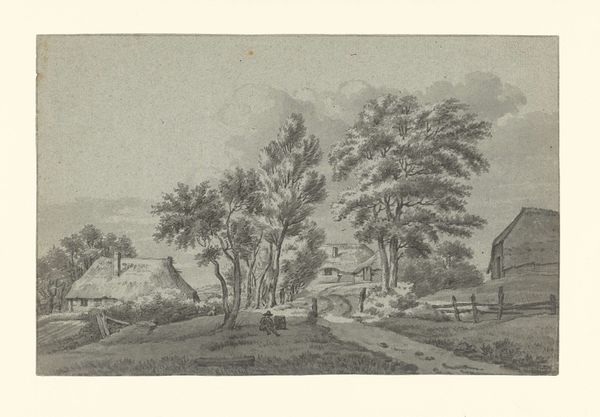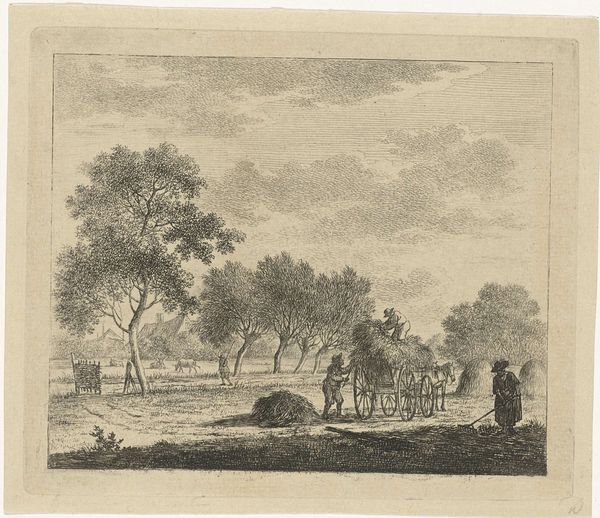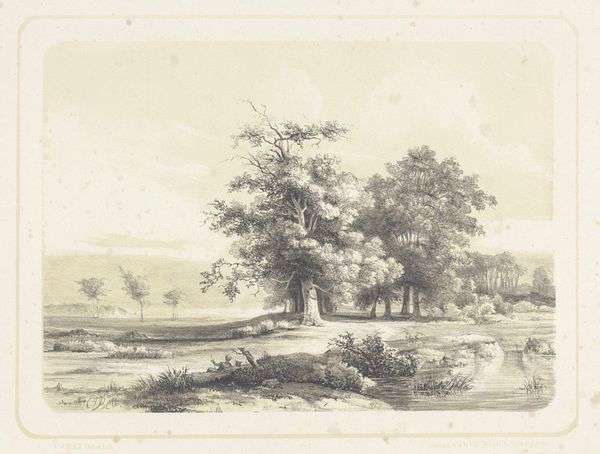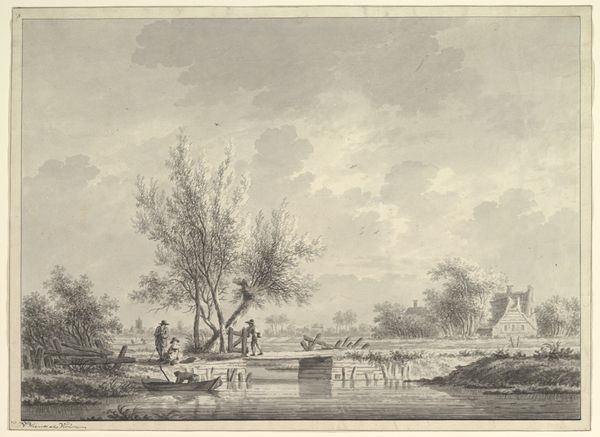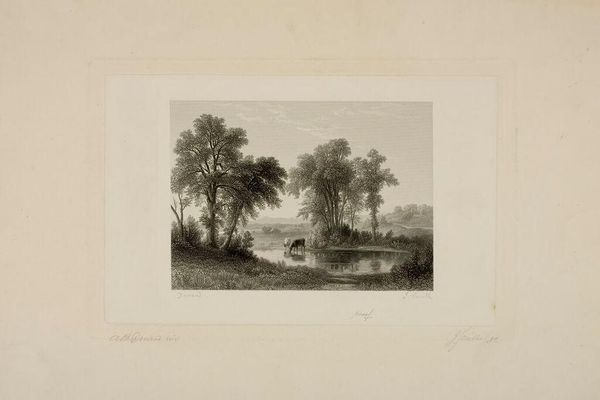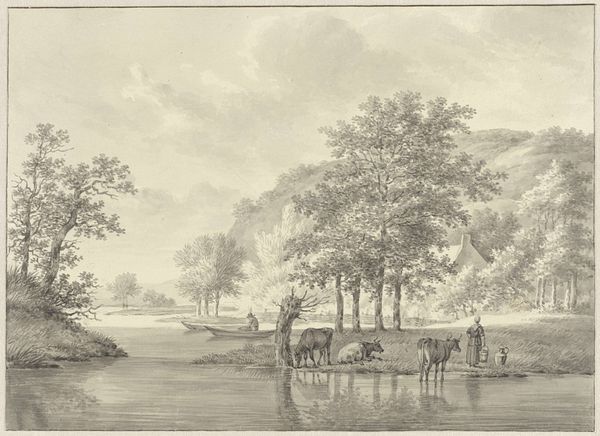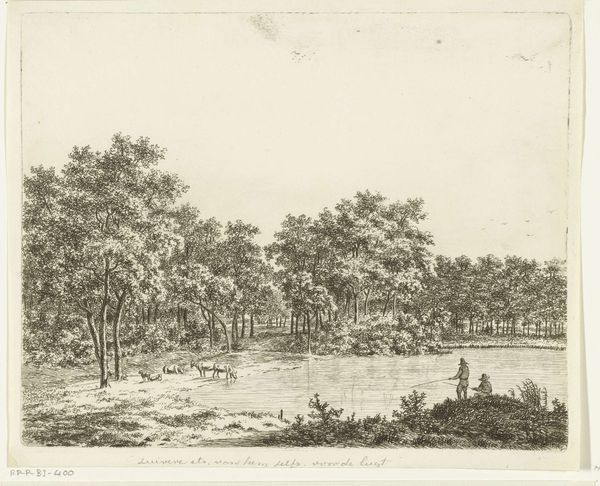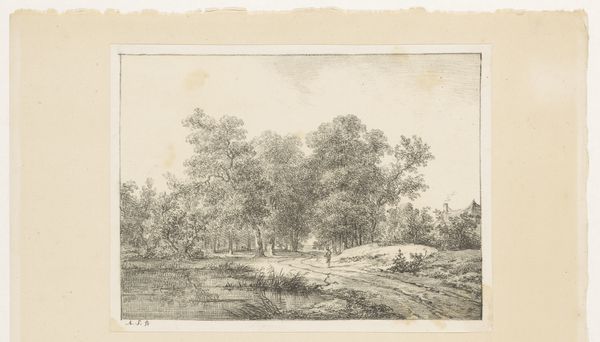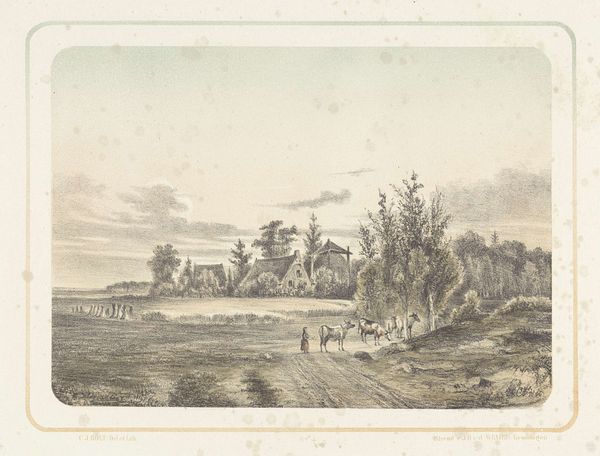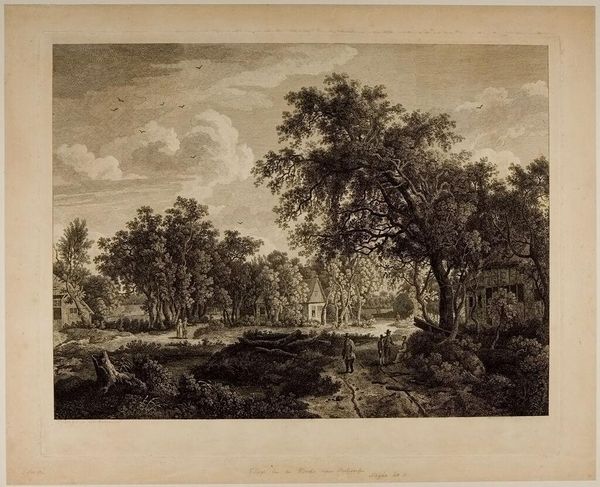
Dimensions: height 361 mm, width 552 mm
Copyright: Rijks Museum: Open Domain
Curator: Here we have "Landscape with Women and Fallen Tree," a watercolor work done in the plein-air tradition, sometime between 1833 and 1879, by Cornelis Jan Bolt. Editor: The first impression is serene—a muted palette, almost monochromatic. It’s subtle, with a slightly melancholic feel. The positioning of the fallen tree creates a strong diagonal line across the foreground, bisecting the calm reflection of the water. Curator: The choice of watercolor as a medium enhances this delicate sensibility. The artist exploits the inherent translucency to create a sense of light and air, hallmarks of Romanticism in painting. Bolt likely aimed to depict an idealized rural life, aligning with the broader 19th-century fascination with nature. Editor: True. And one sees a strong adherence to the period's artistic norms and tropes regarding gender, domesticity and landscape. Those women positioned on the water's edge – are they collecting water, or doing laundry? The inclusion suggests a focus on themes of labor and domesticity within the larger composition. This depiction underscores the traditional role of women in the countryside. Curator: The semiotics here are pretty standard; there is a clear symbolic register at play: the fallen tree as indicative of the cyclical nature of life. However, it doesn’t break ground with its composition; instead, it synthesizes popular Romantic aesthetics, making it more historically indicative than radically original. Editor: Precisely. But its effectiveness isn’t in visual rebellion, but cultural resonance, its accessibility. Bolt creates a comfortable, digestible portrayal of Dutch landscape. Think about the intended audience - what narratives did they find acceptable to gaze at when displayed at the gallery? What power dynamics are displayed when someone observes art with this lens? Curator: In contemplating its intended setting, perhaps the most remarkable quality resides in how, even centuries later, we continue parsing images as carriers for complex layers of signification. The interplay between surface and symbolism still captivates us. Editor: Yes, beyond its artistic features, one can engage with the work to understand something about 19th-century societal conditions. It’s a very nice piece.
Comments
No comments
Be the first to comment and join the conversation on the ultimate creative platform.
